Backyard Livestock Farming
Backyard livestock farming means pigs, ducks, chickens, and other animals are kept in a very small area of land which makes livestock easier to manage. Raising livestock animals humanely can use less feed, fuel, and water compared to intensive farming. Backyard livestock farming is the fastest-growing sector of the agricultural economy in India. Before you can raising backyard livestock animals, first research the local zoning laws and ordinances for the city. Also, consider some important points like;
- How many animals are you allowed?
- What kind of livestock is permitted?
- What are the facility requirements and proper care of livestock animals?
In several cases, before you can set up a livestock farm in the backyard you will need to submit documentation to your city. Also, there are laws on how you can go about selling eggs or milk from animals. Raising your animals in the backyard for healthy, organic meat and dairy products can help you and your family avoids some of the authentic health and safety concerns associated with the factory farming of animals.
Livestock can offer farm new revenue streams in addition to increased fertility and weed control. The benefits and challenges of raising livestock in the backyard on a small farm are discussed here, including particular considerations related to producing poultry, rabbits, hogs, sheep and goats, bees, and cattle.
A Step-by-Step Guide to Profitable Backyard Livestock Farming
Housing Management for Backyard Livestock Farming
Proper housing is required for backyard livestock farming but, it should protect the birds from the sun, rain, and predators. For better production performances certain criteria that can be mainly considered are;
- The house must be in east-west orientation to protect from summer wind and cold stress and also for direct sunlight in winter months.
- During summer direct sunlight must be avoided to reduce the summer stress in birds.
- Low-cost housing materials like wood, bamboo, grass, and thatch, etc. can be utilized.
- The house must be free from water seepage or moisture.
- The floor must be in elevated land or above ground level (minimum 2 feet) and free from water crack, easily cleaned, rat-proof, and durable.
- There must be free air movement in the upper part of the shed to reduce gas formation inside the shed.
- The height of the sidewall in the livestock house is approximately 7 feet to 8 feet. The center height is 9 ft to 12 feet with the slope on either side.
- Roofing materials like thatch, tiles, and asbestos, etc can be used.
- The brooder house has easy ventilation and wire netting which is used for open-air ventilation.
Best Livestock Animals for Backyard Farming
Poultry for Backyard Livestock Farming
Poultry means chickens, turkeys, quail, and ducks, raised for meat and egg production. The potentiality of indigenous birds in terms of egg production is 70 to 80 eggs/ bird/ year and meat production is also less. Though, the backyard poultry production can be easily boosted up with improved varieties of chicken and can promise a better production of meat and egg. Generally, raising backyard poultry is easy with the low-cost initial investment, but high economic return along with a guarantee for improving protein deficiency among the poor.
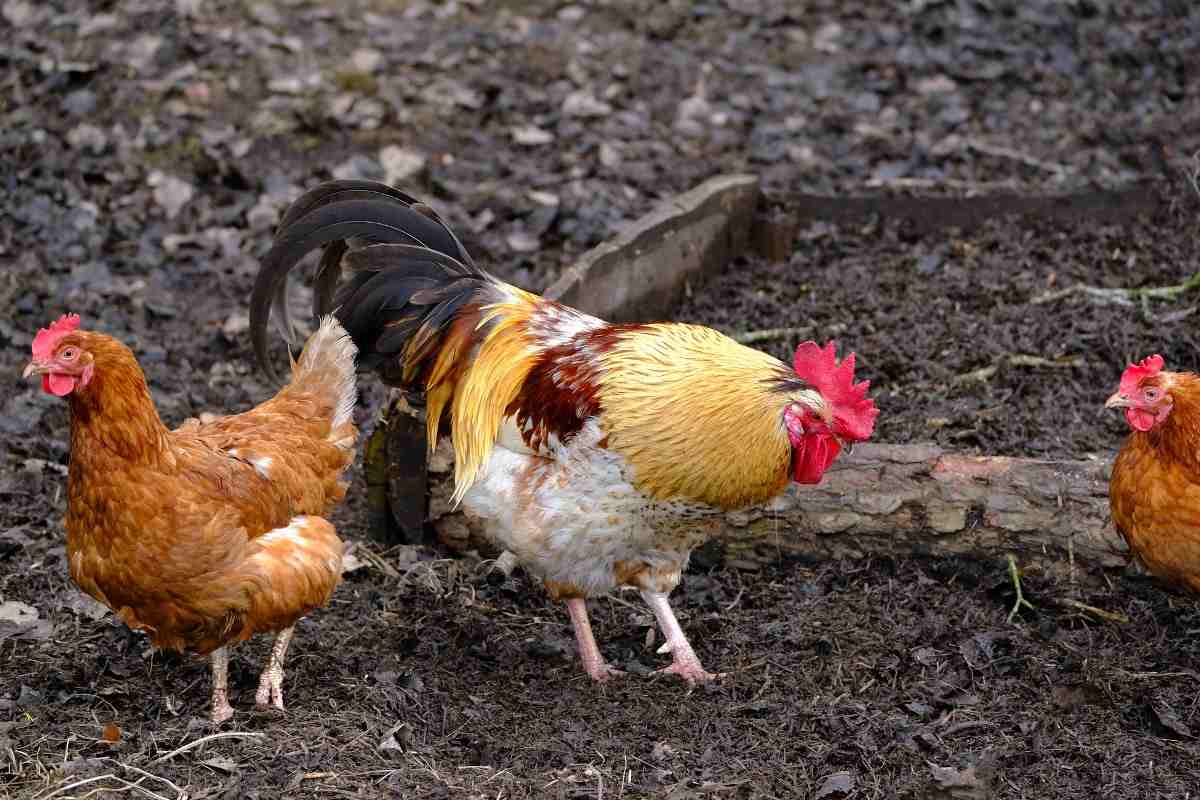
Why go for backyard poultry farming?
- Low initial investment but higher economic return.
- A backyard unit can be started with as low as two chickens to a large flock.
- Poultry farming eggs and birds can be sold in the local market at a high price because there is a growing demand for local chicken.
- Consumers are willing for high-quality desi chicken meat or egg to pay higher prices.
- Boost up in family income for better utilization of family laborers that are not able to perform other agricultural works like old family members or children.
- Chicken and egg quality is better in backyard poultry farming.
Chickens
Raising chickens in the backyard means a steady supply of fresh eggs without ever having to go to the grocery store. But you’ll have to make sure to have an enclosure that keeps chickens in and predators out and coops that are large enough to provide adequate living space. Raising chickens make great pets if you understand how to care for them and recognize their need.
The two broad categories are layers (eggs) and broilers (for meat). However, many heritage breeds are considered “dual-purpose”. Online hatcheries offer hundreds of breeds for overnight mail delivery (generally day-old chicks); select based on egg productivity, growth rate, disease resistance, and appearance. It requires a dry and well-ventilated coop with a nesting box for each bird and a roosting bar for them all to sleep on at night.
Chickens are the indispensable farm animal. To raise chickens in a backyard, you´ll need a small chicken coop that includes a brooding area where you´ll keep your baby chickens warm, some nests where hens can lay eggs, and a caged-in sleeping area. During the daytime, you can let your chickens run free on the “range” of the yard. Generally, chickens have a natural tendency to scratch, and they can function as a “natural pest control”. Many areas are updating their ordinances to allow for backyard chicken raising, there is no better way to anger your neighbors than a rooster that wakes them every morning at 4 am. If you do want a rooster (and you will need one if you plan on harvesting fertile eggs that can hatch into new chicks), consider the Faverolles and Barred Rocks breeds. These breeds are quiet, especially if you maintain a minimum ratio of 1 rooster to 6 hens.
During the winter season, your chickens will only need a bit of supplemental feed and lots of fresh hay to put into their coop. The mixture of straw or hay and chicken poop can go into the compost bin for an extra dose of nitrogen that plants will love in the springtime. Also, chickens love eating through your kitchen scraps. They are a simple way to get rid of food waste, which is a surprisingly significant contributor to household greenhouse gas emissions.
Tureky Birds for Backyard Livestock Farming
For raising turkeys in the backyard, you will want to have the right space and housing setup. Generally, turkeys are raised for both their eggs and their meat. If raising turkeys for meat, it’s recommended to select heritage turkeys as they are valued for their beautiful plumage and wonderful flavor.
Turkeys lay delicious eggs, but not nearly at the rate of chickens and they are primarily meat birds. Modern commercial breeds (there are only two types like broad-breasted white and broad-breasted bronze) are best avoided for backyard farming purposes, as these birds are disease-prone and have trouble with basic bird functions such as walking. Several heritage breeds, which differ little in meat quality, are obtainable from online hatcheries.
Ducks for Backyard Livestock Farming
If you have a water source like a pond, whether human-made or natural, you might want to consider raising ducks in the backyard. Provide a freshwater fountain for ducks and a secure, safe shelter to protect them from the elements and predators. Though, feeding requirements change as the animals mature, so not to overfeed them an overload of protein is dangerous to their health.
If you intend to keep the livestock animals for meat, eggs, or as helpers in the garden, know that ducks are a great addition to the backyard. Ducks are easy-going, tolerant to cold, and resistant to diseases, and are perfect for the backyard.
How to get started raising backyard ducks
Once you have to raise ducks in the backyard, the easiest way to get started is to buy a few ducklings at your local feed store in springtime. You could buy them online from a trusted hatchery, or a nearby farm.
When you bring your new day-old baby ducklings to your backyard, you will discover that you need a few things for their happy survival;
Brooder – To keep ducks safe all you need is a box filled with wood shavings or a metal box with a wire mesh floor that allows droppings to pass through.
Heat source – A heat lamp with a red bulb will substitute for their mother’s warmth at 32°C. Once ducks have developed feathers, they do not require the extra heat.
Bedding material – Pine shavings or straw are two good options for bedding materials, make sure to change it daily as it will get wet.
Freshwater – Though, the water needs to be deep enough for the ducks to clean their nostrils and beaks as they drink. Give them fresh water every day.
More dual-purpose duck breeds for backyard rearing are Aylesbury, Orpington, Blue Swedish, Cayuga, and Silver Appleyard
Goats for Backyard Livestock Farming
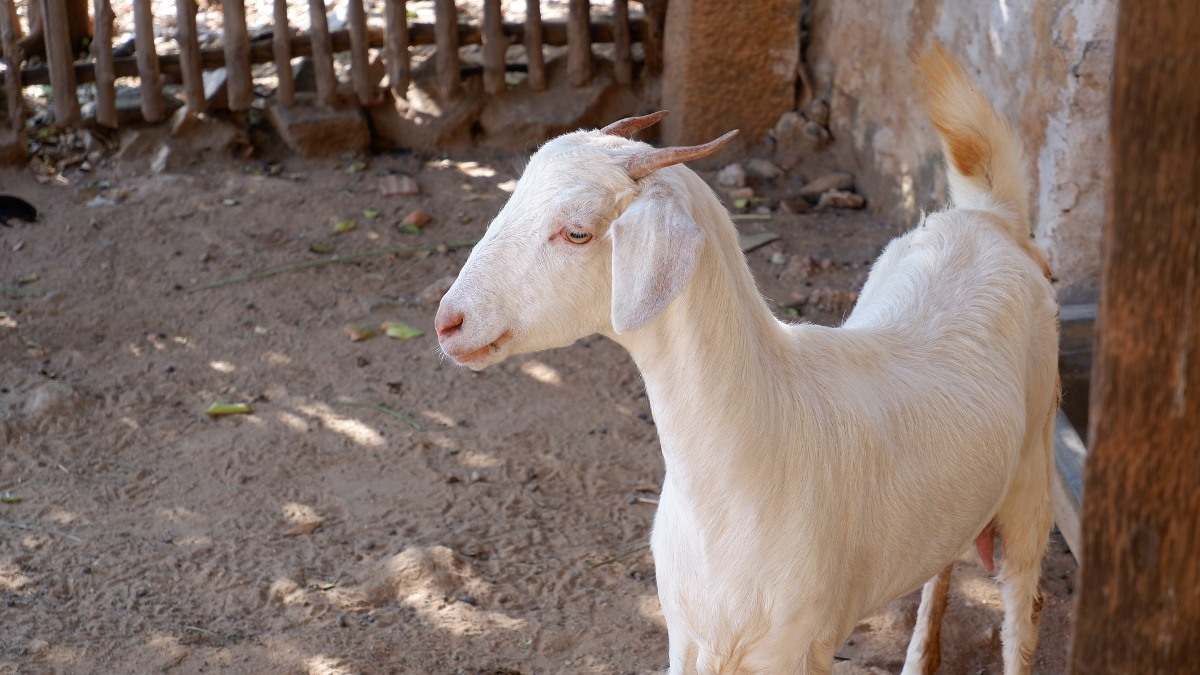
Not all areas will allow you to have goats, so you must always check before bringing one home with you. Erect an enclosure that keeps the goat warm and safe from inclement weather and has multiple levels. You will want to make sure that fencing is goat-proof so that your little goat doesn’t escape your yard and start wandering the neighborhood. For their nutritional needs, goats must have access to pasture or, at the very least, bales of hay.
These are highly social herd animals, so you’ll need at least two; most urban lots don’t have space for more than 4 or 5. Two full-size dairy goats will give enough milk for the average family, plus plenty left over for cheese- and yogurt-making. Goats are content to dwell in a 3-sided shed-like structure lined with fresh straw. Feeding and milking are twice-a-day chores. Clean out their pen weekly and trim hooves every 6 weeks. Goats are a good choice for backyard livestock farming. Consider how much land you have to raise livestock in the backyard before buying goats, paying particular attention to existing fences. If you have no fences for goats, you can try electric wire or build fences as you go along. A holding pen is essential for any animal, as you will need some way to contain them occasionally, such as to give vaccinations or other care.
Generally, goats prefer group spaces when it comes to housing. Does should have 20 to 30 square feet of backyard space apiece, while bucks require about 100 square feet. Generally, goats eat a pound of grain per day, and up to 4 pounds for large meat goats or lactating dairy does. They will also eat between 4 and 5 pounds of hay or forage per day, and they must have access to a mineral block so that they aren’t missing any crucial nutrients. If you are looking for a dairy source but don’t have a lot of acreages for raising a goat is the way to go. Nigerian Dwarf goats can produce anywhere from about ½-1 gallon of milk per day. Goat milk is easier to digest than cow’s milk and a Nigerian Dwarf variety only weighs about 75 pounds so they are much more feasible in a smaller space. Goats will feed on shrubbery and wood. These goats love hay, vegetables, and also store-bought feed. Some people choose to leave their goats out to pasture. If your goats are in a smaller space it is good to give them a covered place to stay dry when it rains and they will appreciate it.
Goats are susceptible to illness. It is very important to worm them a few times a year. You can select to use store-bought medication or feed them pumpkin or pine trees. If you notice the goats have a stomach problem start treating them immediately.
Country Chicken for Backyard Livestock Farming
Backyard poultry makes protein-rich food available to rural people in their backyard. Over the longer term, the hope is that the popularization of backyard poultry farming will help address poverty, hunger, and malnutrition throughout rural India. Though, chicken tractors or movable fencing enable you to provide temporary access to another area of your backyard. This allows you to move birds to different grassy spots providing space in which to stretch their legs while offering needed shelter and protection from predators. Generally, people rear country chicken in their house in the backyard. In this process outcome of excreta was comparatively lesser than others.
For chicken keepers without a fenced-in backyard, this solution is a viable option. Then, it can be a way to give birds controlled access to another part of the yard while taking the pressure off the coop space. It is a great resource when seeking a complete cleanout of the coop. With more and more flocks of backyard chickens cropping up in several environments, there is a trend toward confinement in chicken pens and runs with some free-ranging.
Training birds to know specific cues will help them return to the backyard chicken coop at night or during storms and keep a balanced diet. And, a completely fenced-in yard allows chickens to free-range during part or all of the day, which has definite advantages. The country chicken will spread out and use their space for foraging natural, high-protein resources insects, lizards, and small mammals in backyard space. Then, you plan to construct a free-range chicken house; and you have to pick a well-drained location with lots of air movement. The right housing has proper ventilation and the right lighting. Ventilation is necessary for chicken housing so that sufficient air exchange can happen.
Kadaknath Chicken for Backyard Livestock Farming
In India, the Kadaknath chicken breed is one of the rarest poultry breeds and it is famous for its meat quality, texture, and taste. Kadaknath chicken is native to the Jhabua district of Madhya Pradesh (MP) in India. It is popular for its black meat and it is known as BMC (black meat chicken).
Raising backyard chickens are plenty of situations in which free-ranging isn’t practical. In addition to organic fertilizer and lawn aeration, backyards chickens offer organic pest control and act as natural weed killers in your garden and lawn. Though, it may require little more care initially to grow in a controlled environment. One can grow these birds in backyards. Generally, the kadaknath chicken breed is best suited for backyard farming compared to growing on commercial scales.
The backyard garden and chicken combination work well because chickens love a lot of the things gardeners do not, like weeds and insects. Though, chickens forage for seeds and bugs making them the perfect weed and bug control pet. Also, they eat small plants and clean up fallen fruit and green leaves. Kadaknath Chicken is also known as Black Meat Chicken is one of the three famous chicken types available in the world. Kadaknath Chicken breed is available in three colors like golden, penciled, and dark black.
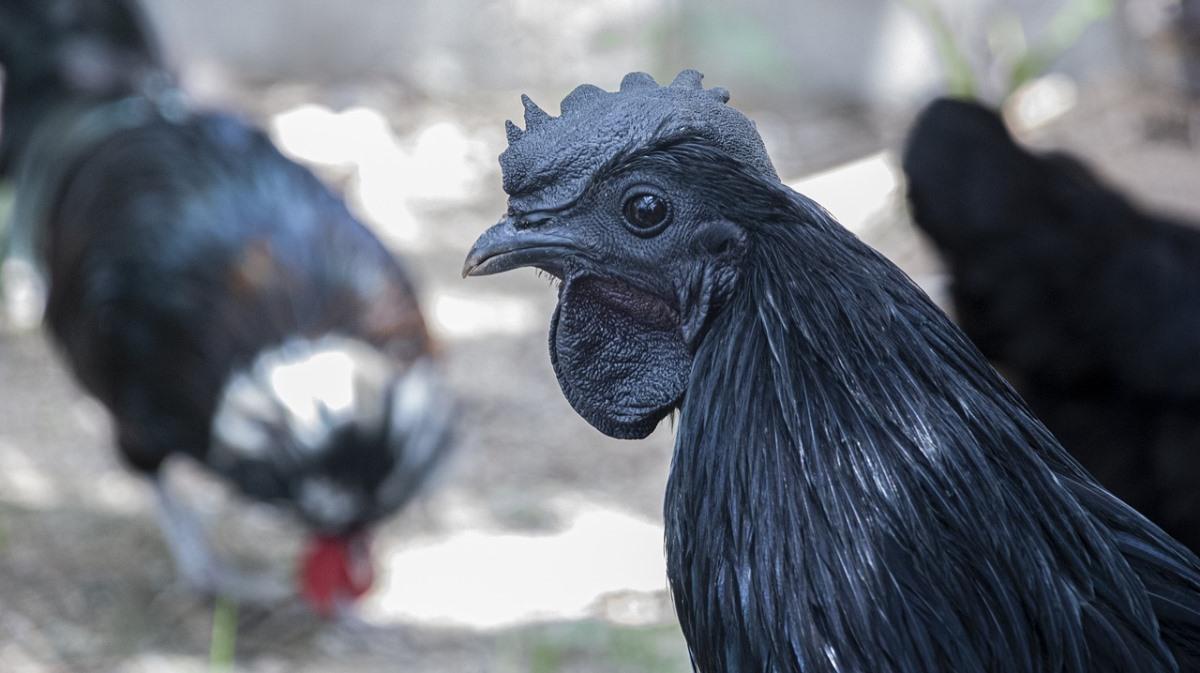
Sheep for Backyard Livestock Farming
Generally, raising sheep provides a dependable source of income to the people through the sale of wool and animals. The main advantage of sheep farming is an economical converter of grass into meat and wool. Friesian and Lacaune sheep are popular sheep breeds, but many other breeds can be trained to serve as dairy sheep while continuing to produce meat and wool. If you intend to raise animals exclusively on grass, they’ll have a big advantage if they’ve been grazing locally and are conditioned to your area.
Sheep are small and easy to handle, compared with cows, horses, and pigs. Sheep is a popular backyard livestock option available for a small farm. Normally, raising sheep in the backyard can be fun and rewarding. Sheep provide companionship, produces abundant wool, and also makes delicious milk, cheese, and lamb roasts. The shelter for sheep can be simple and easy. They will do well with a three sides open shed, sometimes called a run-in shed. Raise a flock of sheep in the backyard. The best sheep breeds for a small farm are Barbados Blackbelly, East Friesian, Merino, Polypay, and Suffolk.
Rabbits for Backyard Livestock Farming
Raising backyard rabbits makes a fun, easy project that fulfills a variety of needs. With minimal time, space, and financial requirements, raising rabbits is a great introduction to backyard space, a simple way to make a little extra money. Rabbits can be indoor pets, but you can also easily raise rabbits in the backyard. They are good for vegetable gardens because their manure is a fertilizer that doesn’t require composting beforehand.
The average rabbit will generate about 1 pound of manure per week, or about 50 pounds each year. Less likely than some other manure to burn plants, it makes great fertilizer and is a good choice for plants that need heavy feedings, such as roses and azaleas. You will need at least one male and one female to start, which will soon produce more offspring than a family can eat.
Rabbits take up little space in a tiny hutch and attached fenced area in the backyard. However, you do need a separate hutch to house any males you plan to keep. Also, letting the rabbits out of the hutch and into the run each morning and closing them up again before dark, providing food and water are the daily chores.
An effective way of keeping out rabbits is chicken wire fencing. Install a fence that is about 4 feet high and bury it 6 inches deep. Then, bend the top foot of the fence away from the garden like a security fence. Another benefit of raising backyard bunnies is the minimal impact on space and resources. A backyard rabbit hutch provides 10 square feet of space, or more, per adult rabbit. Additional protected run space in the backyard will result in happier, healthier bunnies. It is essential to understand, that rabbits reproduce exceptionally quickly, meaning you will have a steady supply of high-protein, healthy meat or need to find a home for your quickly-increasing colony of rabbits.
In case if you miss this: Organic Moringa Farming.
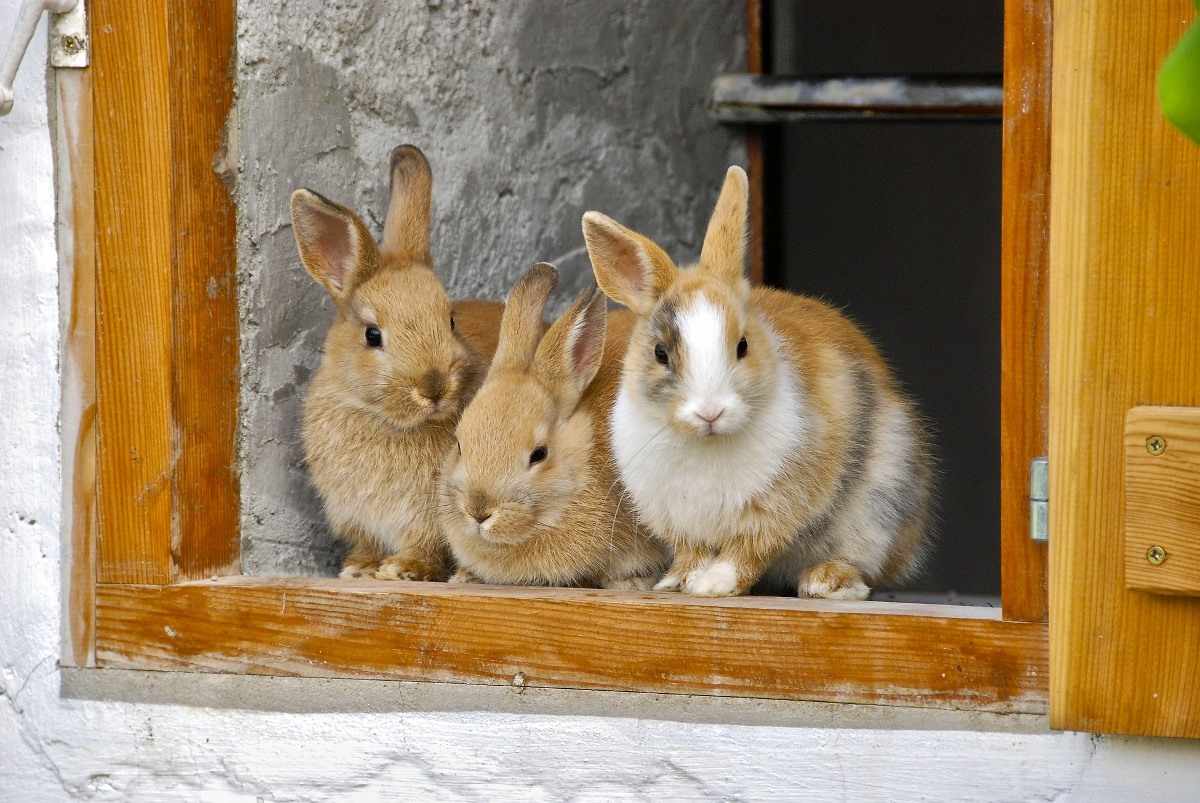
Rabbits are an animal that is overlooked by the casual, hobby backyard farmer. Rabbits are smart and can be litter box trained to make cleaning chores easier. They don’t require a huge area, in a space that is about 7 feet x 8 feet you can set up a wonderful little area for a pair of bunnies to enjoy and explore.
Bees for Backyard Livestock Farming
You can have a backyard bee farm and produce your fresh honey supply. For an urban beehive, you will need to check beekeeping regulations for your area or location. Your backyard space needs to have a fence, and you’ll want to invest in a beekeeper suit to protect yourself from stings when you handle the hive. Also, you may want to let your neighbors know about the bees, especially if there’s a risk of allergic reactions. Keep beehive away from where others can mess with it.
Bees are an amazing and low maintenance addition to your backyard farm. After the initial investment of the hive and other beekeeping equipment, bees are less expensive to keep compared to many other farm animals. Usually, beekeepers will provide sugar water as a backup food source for their hives, but for the most part, your bees will be foraging for their food up to 5 miles from your property. Beekeeping is not an everyday chore, unlike having to feed and water traditional farm animals like chickens or rabbits.
Honey is the major benefit of keeping bees. The output of a standard hive can vary depending on different factors, but on average you can expect about 20 to 30 pounds of honey a year. Keeping bees in the backyard also greatly benefits your garden. Bees will forage all over the neighborhood, but they will spend plenty of time right in your yard pollinating your plants making for bigger harvests.
Pigs for Backyard Livestock Farming
Pigs make great companion animals also being an excellent choice for a backyard farm. But keep in mind that they can be a bit messy and that they like to eat everything. Pigs require proper fencing and housing enclosures, and you need a plan to take care of all the manure in your backyard. Also, you can try composting it or selling it as fertilizer.
As with any animal, pigs require shelter to keep them from being exposed to harsh environmental elements and potential predators. These are woefully sensitive to extreme weather conditions, whether it is heat spells or freezing temperature levels. You must provide them with a stall that is well ventilated for hotter days but can protect them from wind and snow during the winter season. Kitchen scraps, windfall apples, or allowing the pig’s access to an overgrown vegetable garden are great ideas to give them plenty of variety in a balanced diet.
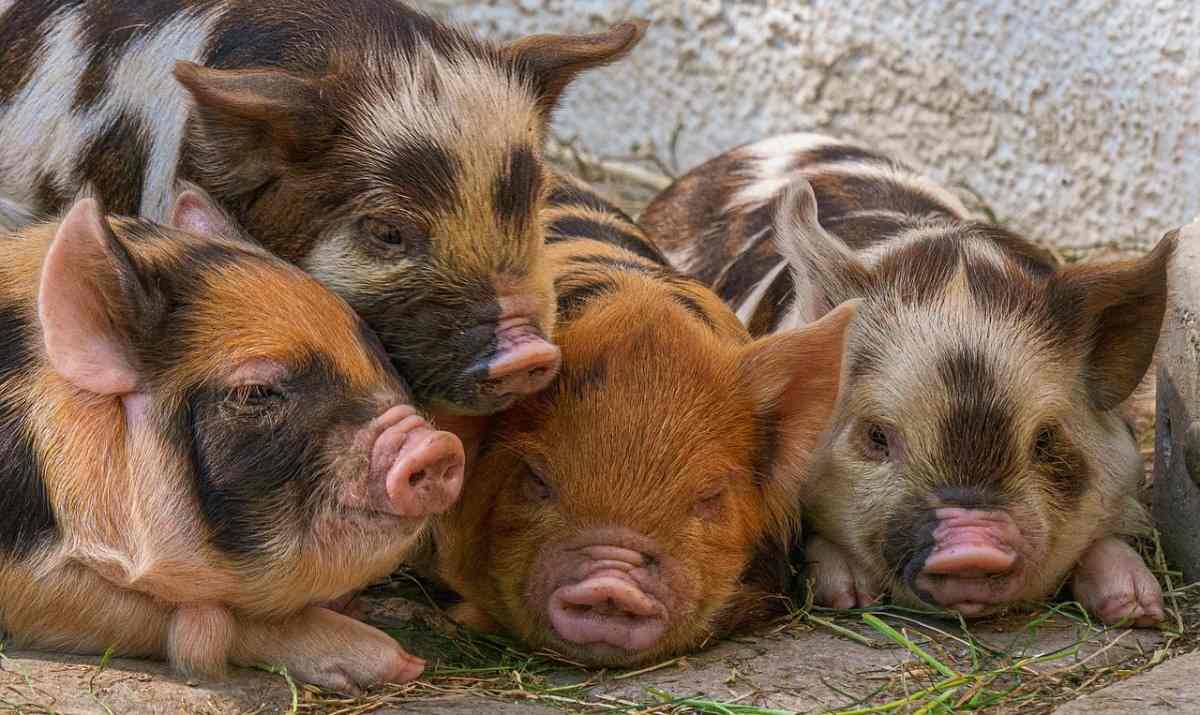
Hanging bags of charcoal around the pigpen can help absorb odors, and uneaten food must be discarded quickly to minimize odors and avoid attracting rodents. Backyard pig farming does not come without cost. Foraging pigs can quickly destroy a small backyard space and will need additional food to ensure their proper development. Establishing a proper diet with balanced nutrition will be essential for producing healthy pigs in the backyard. By construct proper fencing, shelter, diet, and care from a veterinarian, those who are committed to the welfare of their swine can raise healthy and happy pigs in the backyard.
Quails for Backyard Livestock Farming
Quails are great for small backyard farms. Another benefit to raising quail in the backyard is that they don’t need as much space as raising chickens or goats. Coturnix quail are one of the best options for backyard livestock farming. They are small and can be housed in a different variety of ways.
Coturnix quail is well for starters you can expect eggs to start coming at 6 weeks and birds are full-grown by about 8 weeks old. Hens are egg-laying maniacs. A single hen will lay about 300 eggs a year and the Coturnix quail egg is about 3 or 4 to one average chicken egg but they are creamy and delicious. Raising quail in the backyard can be a fun and profitable business. Quail needs less space and less work compared to chickens and rabbits. Japanese Quails is a popular multi-purpose bird and it is a good choice for backyard growers.
The suitable temperature of the backyard quail farming is 21 to 32°C. But depending on varieties they may sufferer from heat stress at different temperature levels. We found that our birds feel comfortable in between 22-25°C. Quails egg production is dependent on light. Hence, to get enough eggs. Food and water management needs to be correct for raising Quail in the backyard. If they have adequate food and water for each bird, the birds will relish the food and water.
- Economical Aquaculture: A Guide to Low-Budget Fish Farming
- 15 Common Planting Errors That Can Doom Your Fruit Trees
- How to Make Houseplants Bushy: Effective Tips and Ideas
- Innovative Strategies for Boosting Coconut Pollination and Yield
- Pollination Strategies for Maximum Pumpkin Yield
- The Complete Guide to Chicken Fattening: Strategies for Maximum Growth
- Natural Solutions for Tulip Problems: 100% Effective Remedies for Leaf and Bulb-Related Issues
- Revolutionizing Citrus Preservation: Towards a Healthier, Greener Future
- Natural Solutions for Peony Leaf and Flower Problems: 100% Effective Remedies
- Maximizing Profits with Avocado Contract Farming in India: A Comprehensive Guide
- Natural Solutions for Hydrangea Problems: 100% Effective Remedies for Leaf and Flowers
- The Ultimate Guide to Choosing the Perfect Foliage Friend: Bringing Life Indoors
- From Sunlight to Sustainability: 15 Ways to Use Solar Technology in Agriculture
- The Ultimate Guide to Dong Tao Chicken: Exploring from History to Raising
- The Eco-Friendly Makeover: How to Convert Your Unused Swimming Pool into a Fish Pond
- Mastering the Art of Delaware Chicken Farming: Essentials for Healthy Backyard Flocks
- 20 Best Homemade Fertilizers for Money Plant: DIY Recipes and Application Methods
- How to Craft a Comprehensive Free-Range Chicken Farming Business Plan